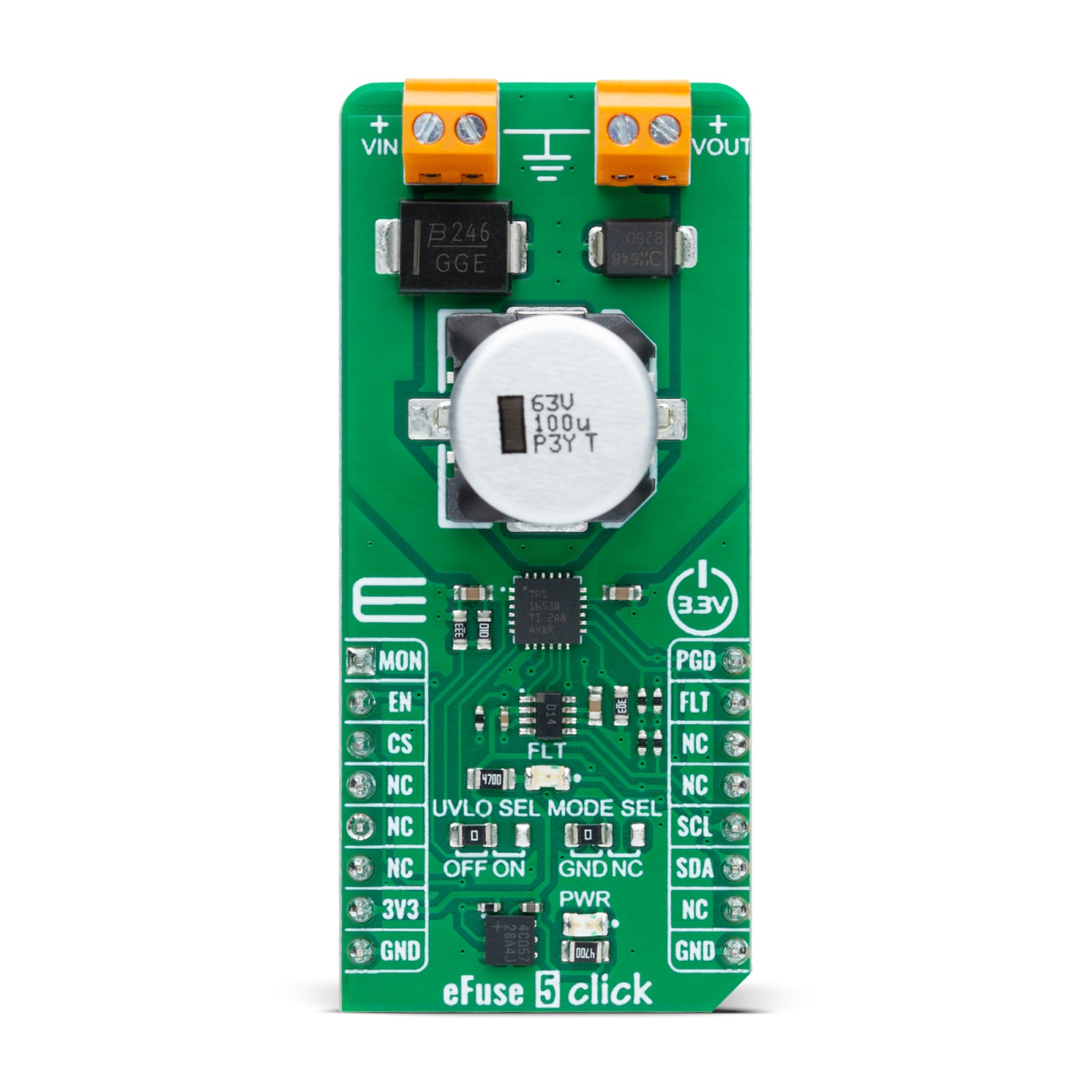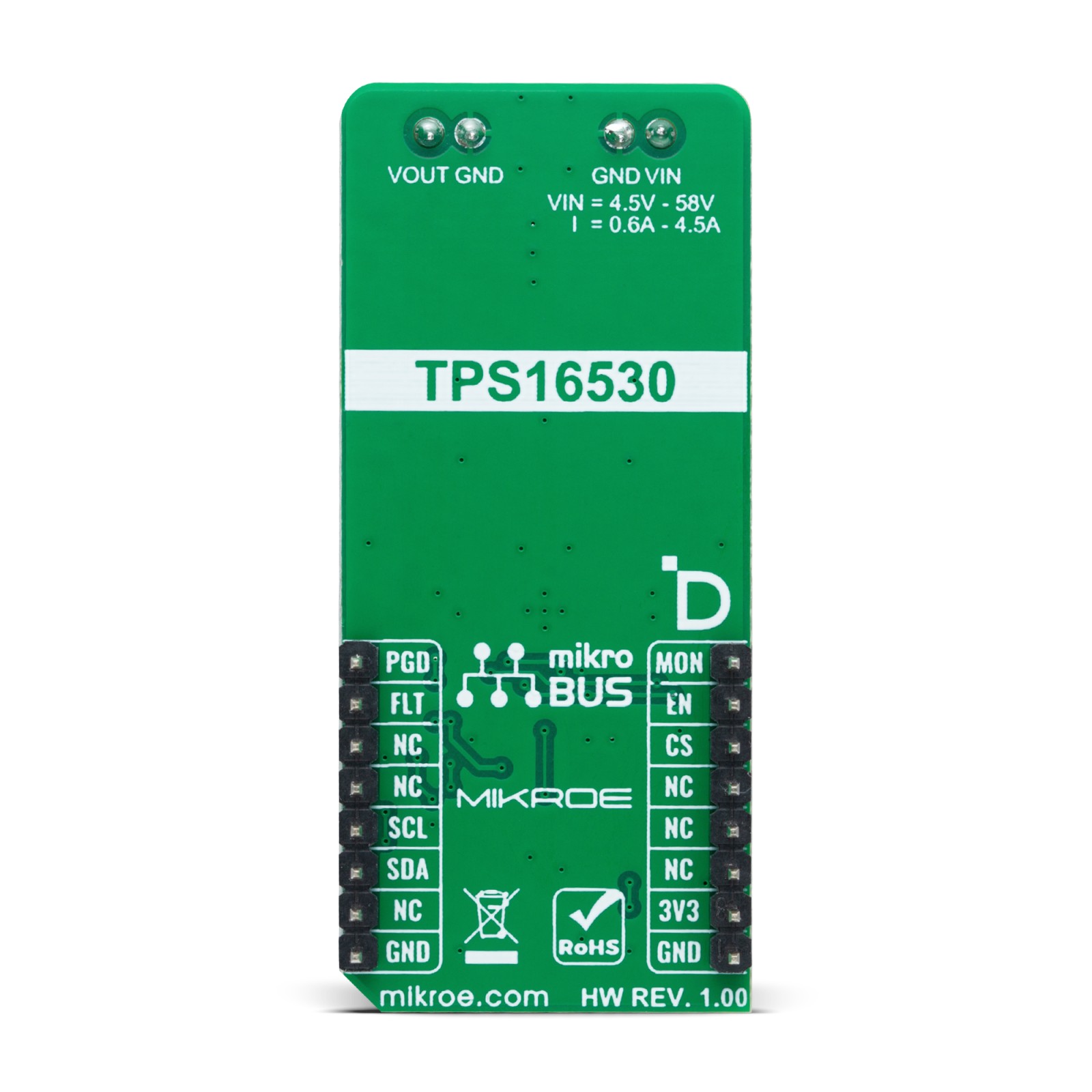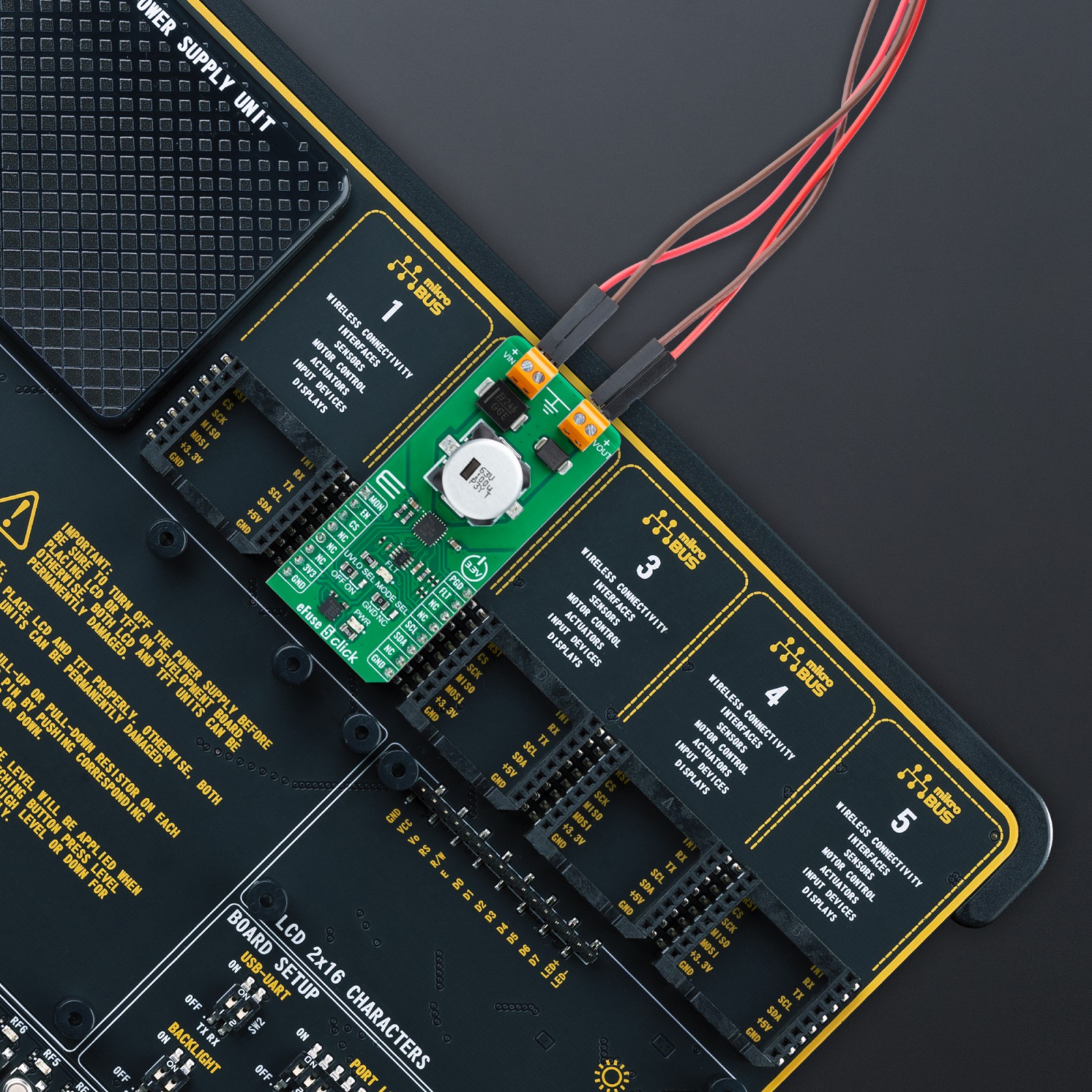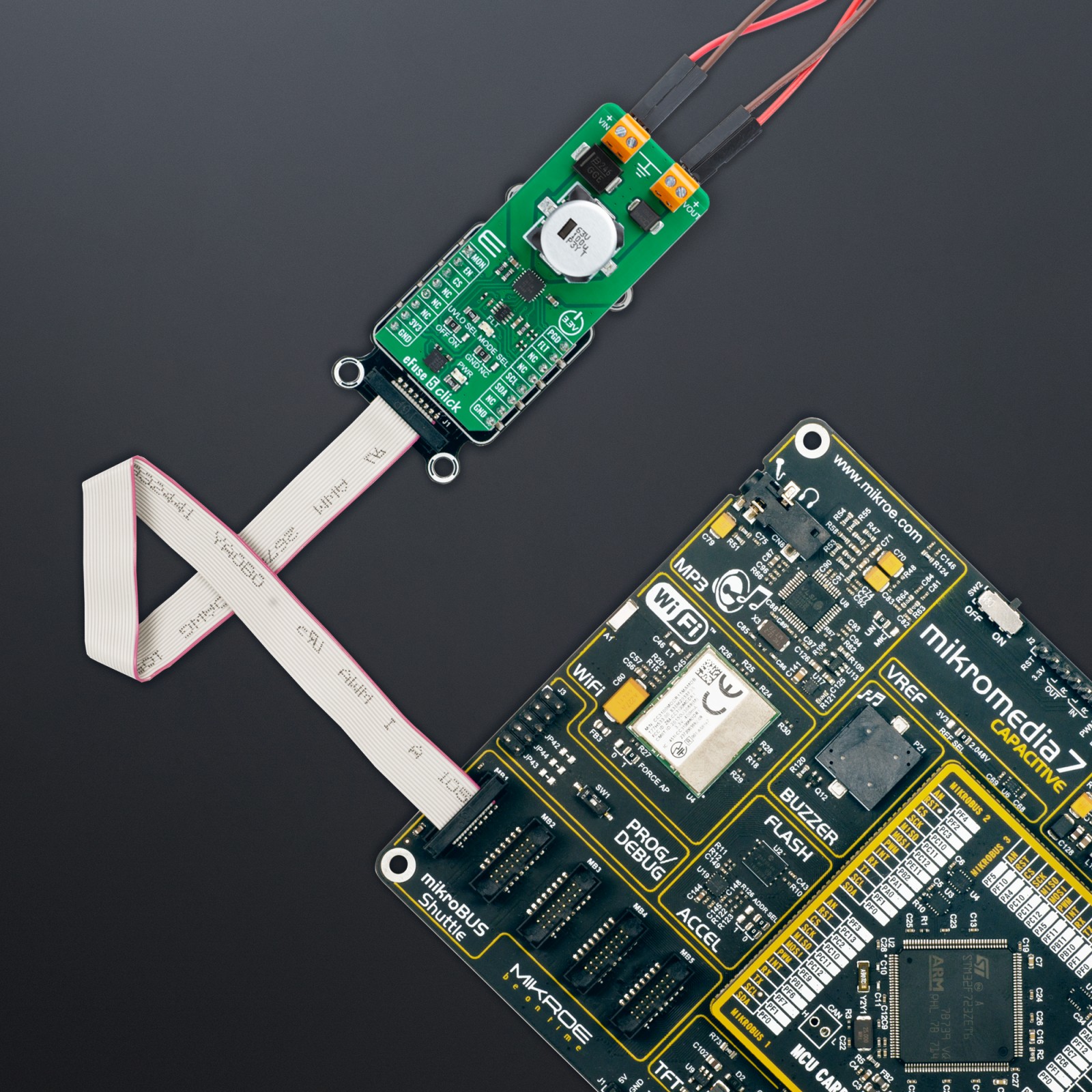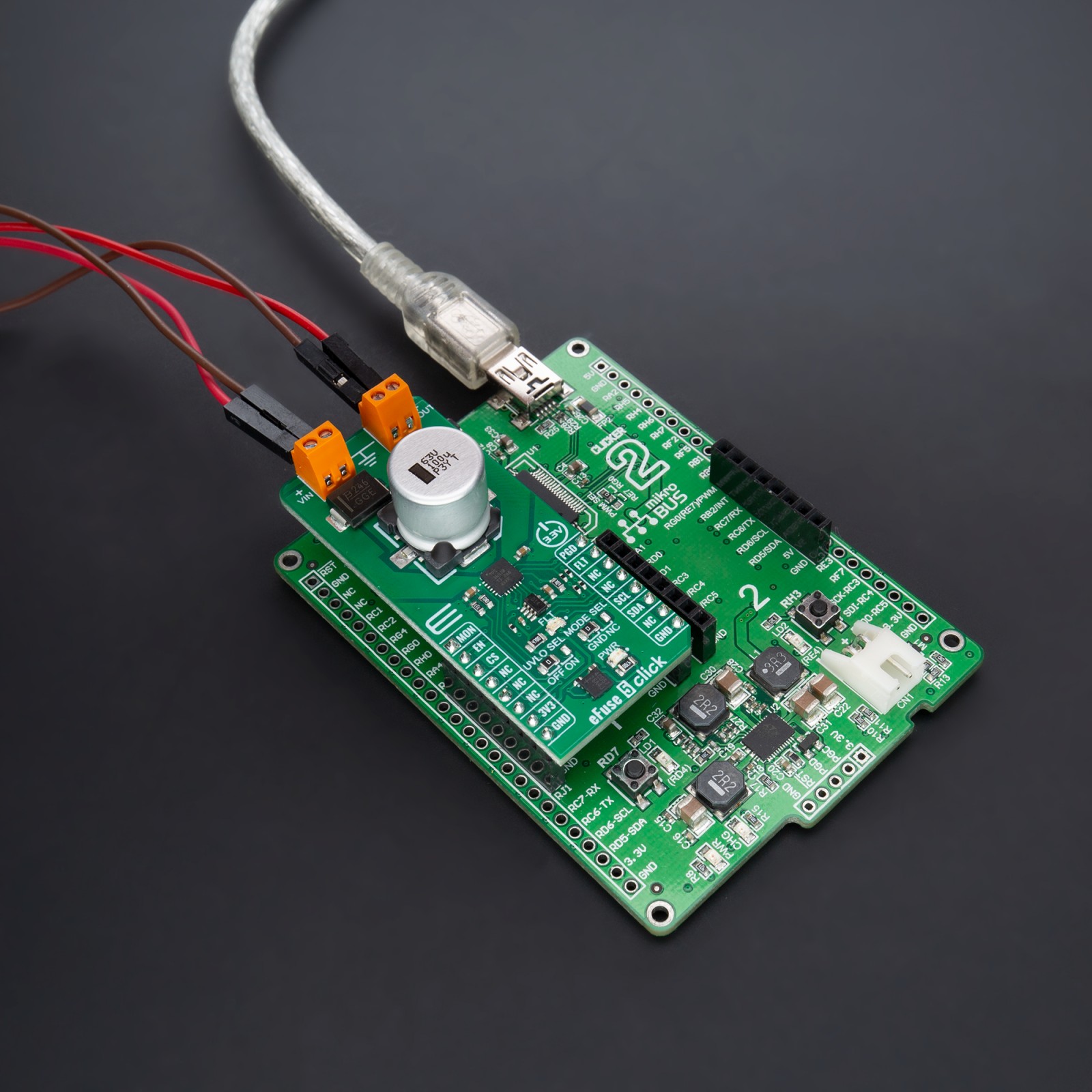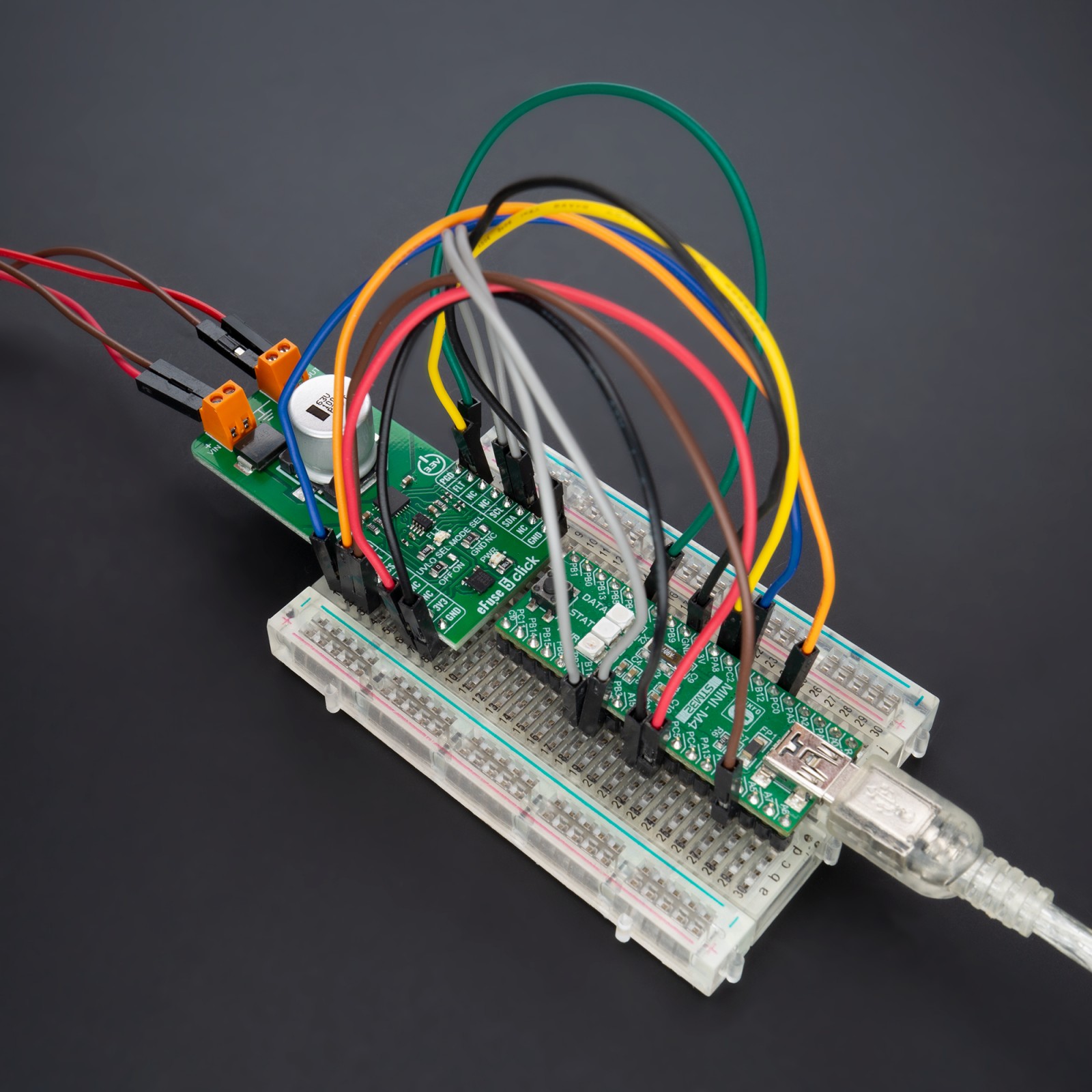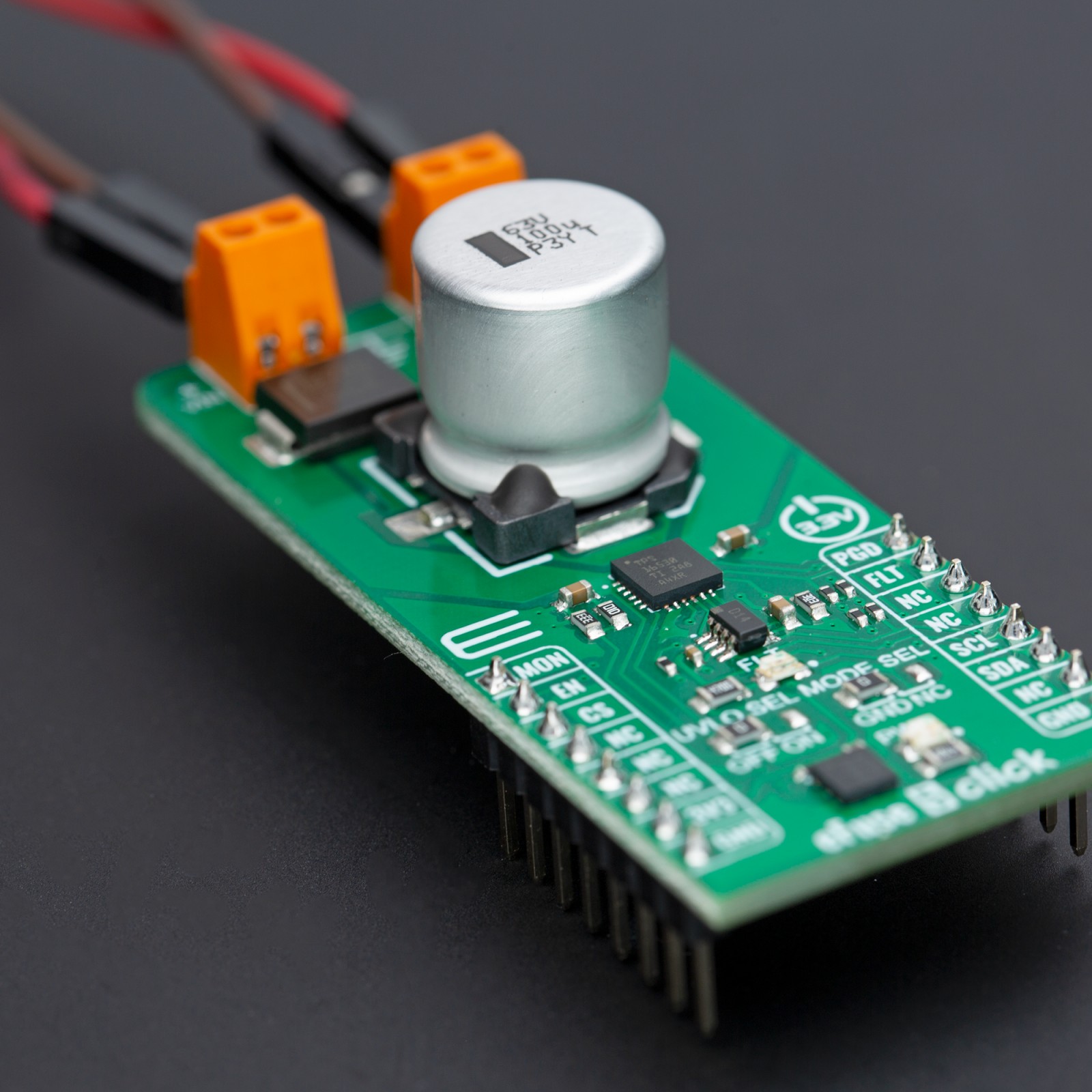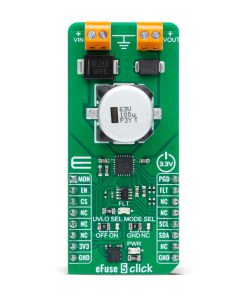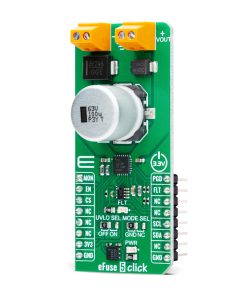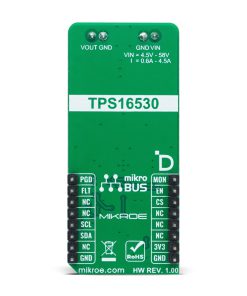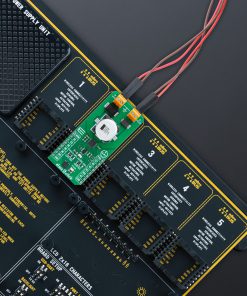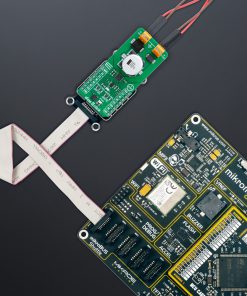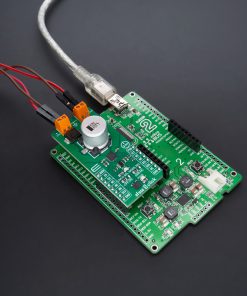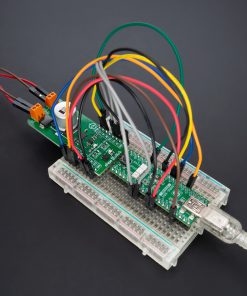eFuse 5 Click
R645.00 ex. VAT
eFuse 5 Click is a compact add-on board with a power path protection solution that limits circuit currents and voltages to safe levels during fault conditions. This board features the TPS16530, an easy-to-use, positive 58V, 4.5A eFuse with a 31mΩ integrated FET from Texas Instruments. This industrial eFuse has programmable undervoltage, overcurrent, inrush current protection, and output current monitoring features. Besides, it allows flexibility to configure the device between the two current-limiting fault responses (latch off and auto-retry). This Click board™ provides robust protection for multiple faults on the system rail and current limiting for systems such as telecom radios and industrial printers.
eFuse 5 Click is fully compatible with the mikroBUS™ socket and can be used on any host system supporting the mikroBUS™ standard. It comes with the mikroSDK open-source libraries, offering unparalleled flexibility for evaluation and customization. What sets this Click board™ apart is the groundbreaking ClickID feature, enabling your host system to seamlessly and automatically detect and identify this add-on board.
Stock: Lead-time applicable.
| 5+ | R612.75 |
| 10+ | R580.50 |
| 15+ | R548.25 |
| 20+ | R527.61 |

